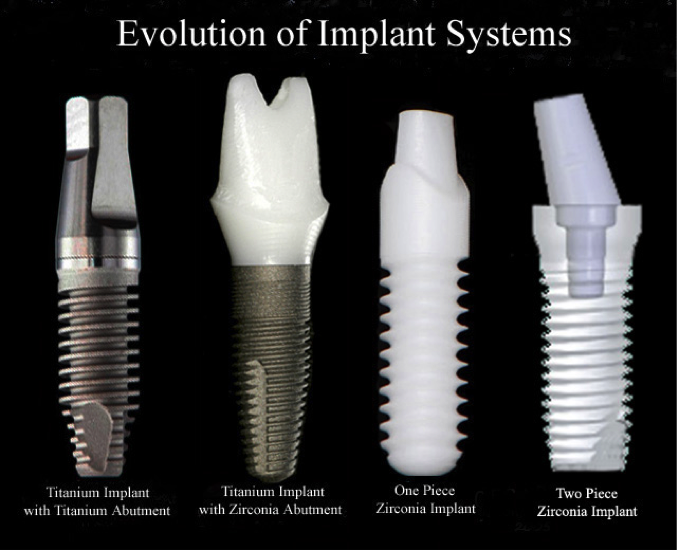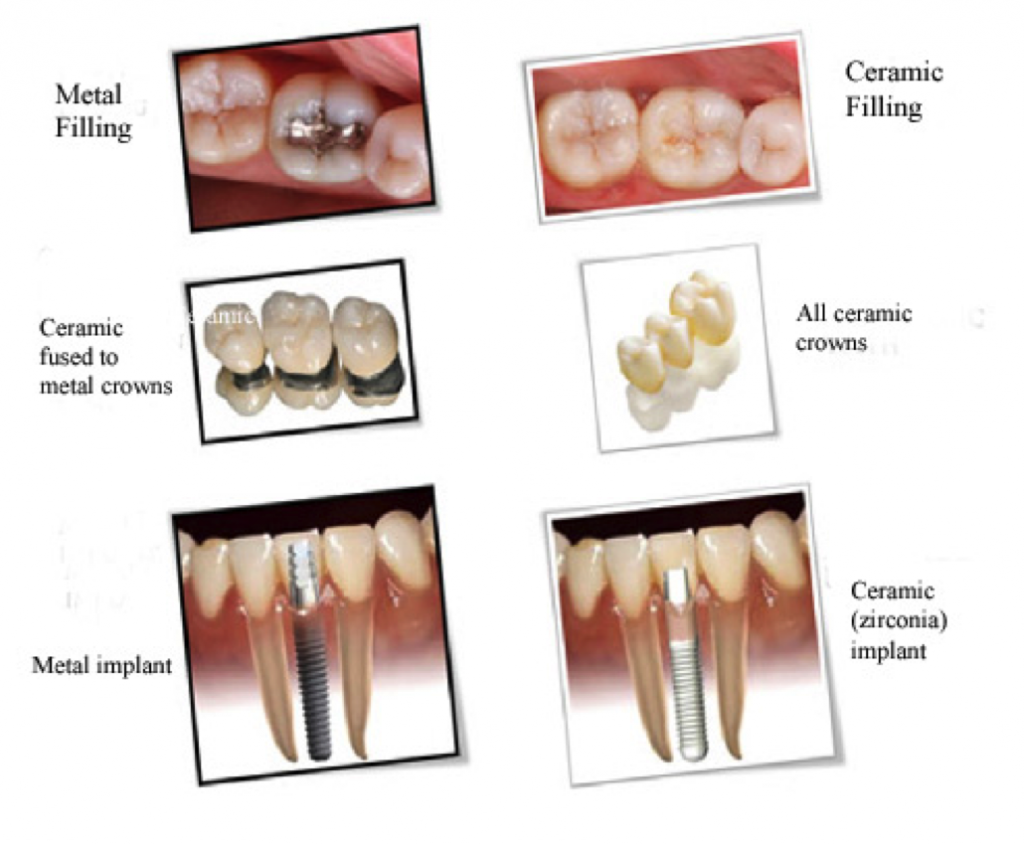Ceramic Implant Systems
by Dr. McBride | Date Published: 2017-03-04 | Download PDF ![]()
The Dental Wellness Center has been recommending titanium root replacement implants to replace missing teeth since the 1980’s with astounding success. Always striving to be at the forefront regarding the usage of healthy dental materials for its patients, the Center is now offering zirconia ceramic implant systems to be used as an alternate to titanium implants. The following will introduce you to this new implant technology in the U.S. both in material type and concept, although it has been developed and used in Europe since the 1980’s. Dr. McBride has taken courses on ceramic implants, researched and sought out the best systems available on the market.
Throughout the decades, the materials that have been used for dental treatments have been made with metal. The main reason was to give mechanical strength and therefore augment the longevity of the treatment. Traditional titanium implant systems consist of two metal components (the implant that is placed into the jaw and the abutment that sits above the gum line) joined together with a fixation screw. It is possible that micro-movement can occur where these pieces meet when under the extreme pressures of chewing, thus creating warm, moist places where anaerobic bacteria have an opportunity to colonize, although with more precise machining over time, this possibility has diminished considerably..
In 2005, the CeraRoot full ceramic implant (fixture and abutment in one body/part) was introduced into the European market and in 2011 accepted by the FDA to be used in U.S. dental clinics. The main advantage of a
one-piece zirconia implant is that it has no prosthetic connections where bacteria can grow, and therefore have better gum health. Another big advantage of zirconia is that the implant is 100% white. This means that no metal will ever be visible when smiling or communicating with other people, such as might be the case with all titanium implants.
Over the past decades, more ceramic components have been incorporated into dentistry due to their clinically proven strength and esthetic benefits. Not only is there a trend to include ceramic crowns and implant abutments (posts placed on implant/fixture in bone) into a treatment plan, but the implant itself is now available both one and two-piece designs made from biocompatible zirconia. The leading companies in this area are Ceraroot one-piece zirconia systems and Straumann, a leader in titanium implants for years that has recently introduced both one and two piece zirconia implants as well.

In the beginning, ceramics were introduced into the patient’s mouth because of its fabulous esthetic properties. However, the latest research shows that esthetics is not the most important characteristic of this material. Titanium is a metal, and suffers corrosion. Zirconia is a ceramic and does not suffer any corrosion. Ceramics, due to its inert, non-corrosive and non-allergic properties, may be a treatment option for those who desire no metal in their mouth for optimum esthetics as well as health reasons.

©2024 Robert P. McBride DDS, Inc. All Rights Reserved.

